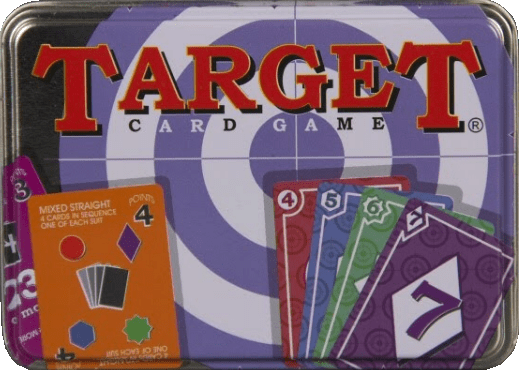Gather round, folks, because today I’m reviewing Target—the game that turned my living room into a wild arena of flying discs and questionable physics. If you’re hunting for a game that’s quick to set up, easy to learn, and packs a healthy amount of chaos, you might have stumbled onto a winner. But before you throw your wallet at it, let’s see how Target really holds up after a few rounds with my friends (and a suspiciously sticky table).
How It Plays
Setting up
Grab the Target board and put it in the middle of the table. Each player picks their own color discs and lines them up close, ready to flick. That’s it. Setup’s so quick, I barely have time to open my snack bag!
Gameplay
On your turn, flick one of your discs across the board, aiming for the bullseye or to knock your friends’ discs out of the way. It’s a mix of skill and luck. You’ll hear plenty of laughs (and maybe a small groan when you send your disc flying off the table). Turns go fast, so your Aunt Linda won’t have time to complain about her bunions.
Winning the game
When all discs are flicked, check where they landed. The closer to the center, the more points you get. Count up those points, compare scores, and the player with the most is crowned the Target champion! Loser buys snacks.
Want to know more? Read our extensive strategy guide for Target.
Gameplay Rules and Strategy Depth in Target: How Not To Embarrass Yourself At Family Night
If you’ve ever wanted a game that makes you question your own decision-making skills and your relative’s eyesight, Target might be your new secret weapon. The rules are simple enough so that even your uncle who still thinks VHS tapes are modern tech can grasp them. In Target, you’re basically trying to throw, flick, or slide a disc onto the board (or table, if you have lost the board already), hoping it lands closer to the center than anyone else’s. It’s like shuffleboard met curling at a dive bar.
Each round, everyone gets a shot at being a champion or, more likely, knocking their own disc off the table. You score points the closer your disc gets to the bullseye. But here’s where things get spicy: If another player knocks your disc, poof!—there go your dreams (and your points). This adds a little drama and keeps players on their toes. It’s not just about the aim; it’s about planning your moves and sometimes sabotaging your friends. I once tried a sneaky bank shot, only to accidentally give my little cousin the win. Apparently, luck is not a viable strategy, but more on that later.
When it comes to strategy, Target isn’t the next chess, but it does reward clever tactics. Predicting where people will shoot, setting up blocks, or just deciding when to go full chaos mode all play a part. There’s enough room for clever plays, but if you’re looking for huge strategic depth, maybe stick to something less… disc-y.
Now, let’s see just how much the balance between luck and skill will make you argue with your friends in the next section!
Luck vs Skill: Who Really Wins in Target?
First things first, I’ve played Target enough times to know exactly how it feels to nail a perfect shot… and how it feels when your piece boomerangs off the board and onto the cat (sorry, Mr. Whiskers). If you enjoy games where skill matters, you’ll have a blast lining up your shots in Target. There is a real sense of satisfaction when you sink that perfect flick, just like sinking a basketball on the last second—the cheers from the table are real (as are the groans of your defeated friends).
But, here’s the catch. No matter how much skill you have, Target always has a pinch of chaos baked in. The board is small, and those pieces bounce in ways you wouldn’t expect. Sometimes, a lucky nudge will win the round for someone who is usually more likely to eat the pieces than hit the Target. I once watched my friend Steve, who couldn’t hit the side of a barn, win three games in a row thanks to wild rebounds. It’s the type of thing that keeps everyone laughing, but it can be frustrating if you’re a strategy purist. If you like total control and no wild outcomes, Target might make you pull your hair out.
So, is it fair? Mostly. There’s enough skill to keep it competitive, but enough luck to keep it unpredictable. Next up, let’s see what happens when you throw four competitive players around a tiny table—player interaction is an entirely different circus!
How Target Gets Players Talking, Laughing, and Sometimes Plotting Revenge
Let me just say: If you sit down to play Target, get ready to really know your friends. Not “which board game piece are you” know them, but the kind of knowing that involves a lot of happy shouting—and maybe the occasional fake apology when someone’s disc bounces off the table and into their snack.
Target isn’t one of those games where you quietly wait for your turn while scrolling through your phone. Nope. Every shot you take gets an immediate reaction. Even when it’s not your go, you find yourself weighing in—sometimes with genuine advice, sometimes with a little light-hearted sabotage (“You sure you want to aim that far left?”). Turns last only seconds, so you’re always engaged. No one has time to wander off or tune out.
The best stories I have about Target almost always involve my friends getting way too into their victory dances, or someone pulling off a fluke shot and suddenly acting like they’ve uncovered a lost talent. Banter is half the fun, and it’s constant. The game creates these micro-moments of drama with each roll, especially as the board fills up and options get scarce. You’ll find yourself plotting your next move out loud, sometimes teaming up for the briefest alliance—before immediately double-crossing them on your next go. And all of this happens in minutes, not hours.
Stay tuned, because next up I’ll talk about the wild world of Target’s bits, bobs, and just how many seconds it takes to go from box to tabletop mayhem.
Target’s Bits, Bobs, and the Setup Shuffle
I have to hand it to Target—the game, not the store (though honestly, I’d love a board game about wild discount shopping chaos). When it comes to the physical pieces, Target is both simple and charming. The discs have a nice heft to them. They don’t feel like you’re flicking cheap bottle caps from a soda you found in your uncle’s garage. The board itself? It’s sturdy! You won’t see it warping if someone spills a little soda—ask me how I know. The designers clearly didn’t cut corners, thank goodness.
As for setup time, let me tell you: if you can put together a peanut butter sandwich, you can set up Target. Just plop the board down, give everyone some discs, and you’re basically ready. I once hosted a game night where one of my pals had two left hands (not literally—I just mean he’s that clumsy), and even he managed to set up Target before I finished pouring drinks. There are no fiddly bits, no 20-step rulebooks, and no weird tokens that look like alien toenails. If you ever played classic dexterity games, this one is as quick to get going as they come.
You want a game that gets to the fun fast, stays fun, and survives a few snacks on the side? Target hits that, er, target. For sheer components-per-dollar and hassle-free setup, I fully recommend it for any group, unless your idea of fun is spending an hour reading rulebooks and organizing tiny plastic thingies. In that case, maybe Target isn’t, well, your target.
Conclusion
Alright, that wraps up my review of Target! After a storm of flying discs and a mountain of noisy laughter, I can honestly say this game shines when you want something light, quick, and full of goofy moments. The setup is simple, the pieces survive even my clumsy cousin Gary, and everyone gets their shot at glory (or embarrassment—looking at you, Tina, with your triple ricochet last game). But, luck sometimes bulldozes skill, so don’t expect a deep brain workout or perfect fairness. If you’re after a party hit where luck and banter rule, Target hits the spot. If not, you might want to keep searching. Until next time, keep your discs on the table—and your drinks off it!


